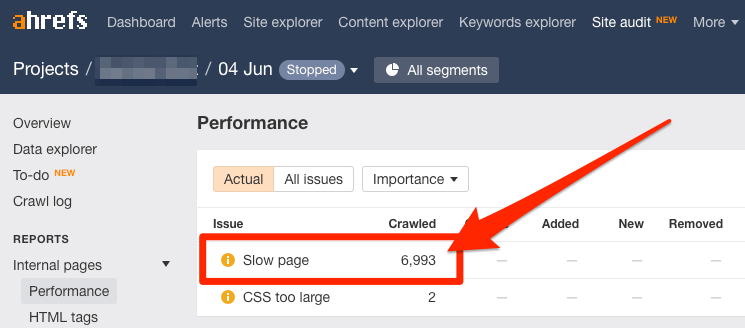

Accessibility: As you might have guessed, this metric is a measure of how accessible your website is, across a plethora of accessibility features that can be implemented in your page (such as the ‘aria-’ attributes like aria-required, audio captions, button names, etc.).
#WEBSITE AUDITOR SLOW OFFLINE#
Scoring points are based on the Baseline PWA checklist laid down by Google which includes Service Worker implementation(s), viewport handling, offline functionality, performance in script-disabled environments, etc. PWA Score (Mobile): Thanks to the rise of Service Workers, app manifests, etc., a lot of modern web applications are moving towards the PWA paradigm, where the objective is to make the application behave as close as possible to native mobile applications.To a layman, this score is indicative of how decently the site performs, with a score of 100 meaning that you figure in the 98th percentile, 50 meaning that you figure in the 75th percentile and so on. Performance: This score is an aggregation of how the page fared in aspects such as (but not limited to) loading speed, time taken for loading for basic frame(s), displaying meaningful content to the user, etc.The top metrics that will be measured in the Audit are: Google Lighthouse has the option of running the Audit for Desktop as well as mobile version of your page(s). Let’s begin by looking at some of the top features and audit criteria used by Lighthouse. The best part is that you have to set up almost nothing to get started.


#WEBSITE AUDITOR SLOW PROFESSIONAL#
All you have to do is run it on a page or pass it a URL, sit back for a couple of minutes and get a very elaborate report, not much short of one that a professional auditor would have compiled in about a week. Google Lighthouse is an open-source, automated tool for improving the quality of web pages.īasically, Google Lighthouse is a tool that lets you audit your web application based on a number of parameters including (but not limited to) performance, based on a number of metrics, mobile compatibility, Progressive Web App (PWA) implementations, etc. The official page on Google’s developer website describes Google Lighthouse as follows: This is when I happened to stumble upon Google Lighthouse. Here is where I got started on the lookout for tools that would allow me to analyze the performance of the application and pinpoint the aspects that were dragging down the numbers. Recently, I was tasked with making our products as seamless as possible in terms of user experience. In such a scenario, the performance of these applications has taken a front seat as far as priorities go. The advent and meteoric rise of Javascript-based frameworks & libraries, particularly the front runners Angular and React, means that more number of people/ organizations are gravitating towards web-applications and not plain old websites. Using the Lighthouse NPM package and CLI.
#WEBSITE AUDITOR SLOW SOFTWARE#
Software Developer with a passion for the written word


 0 kommentar(er)
0 kommentar(er)
